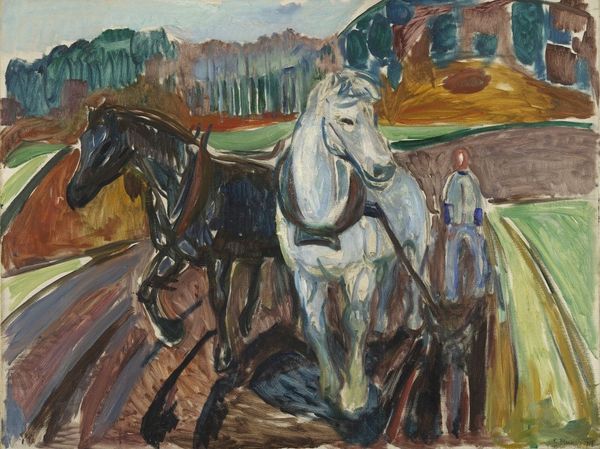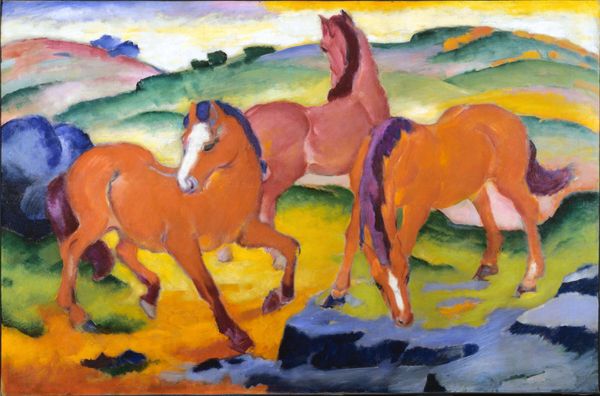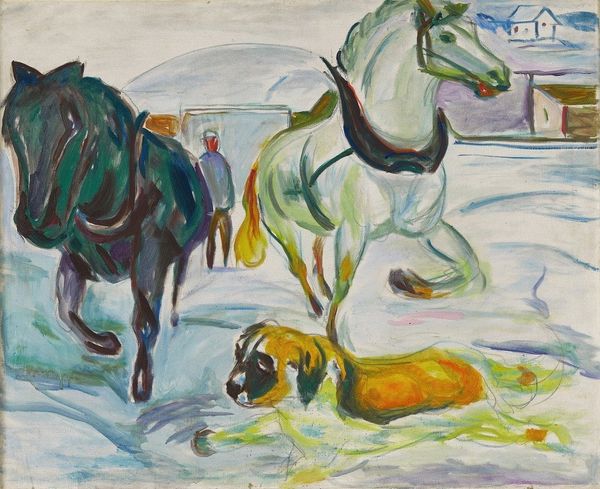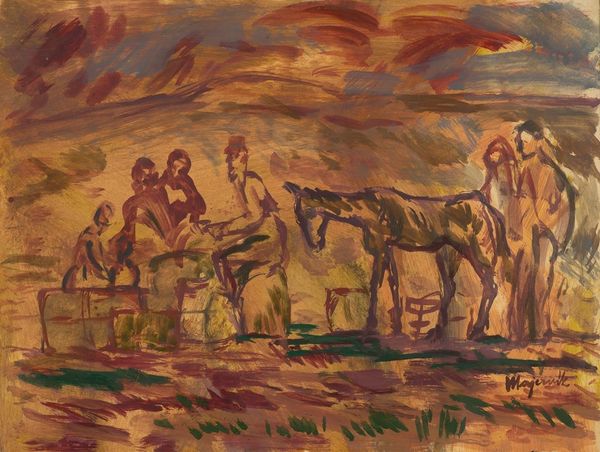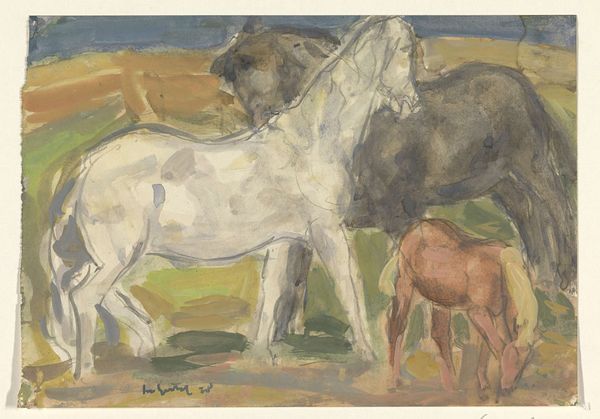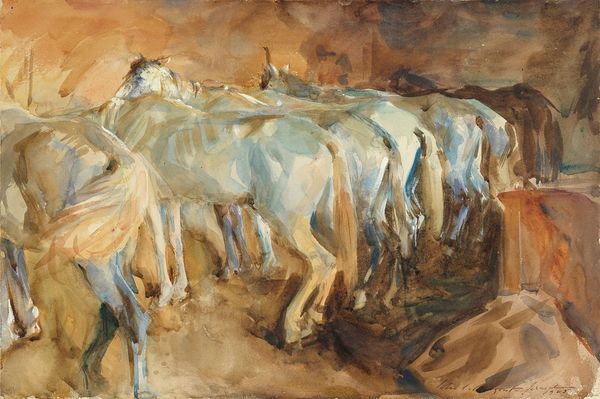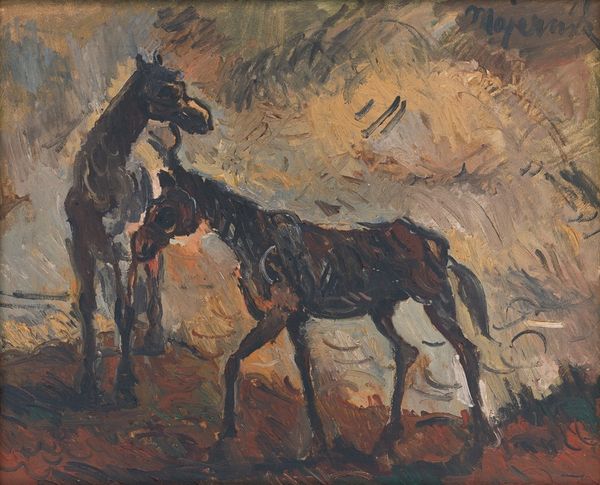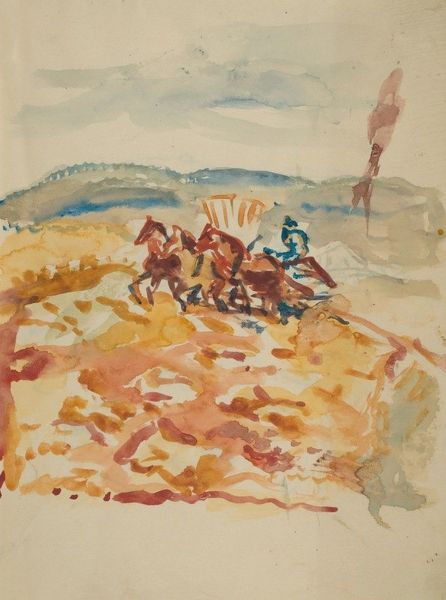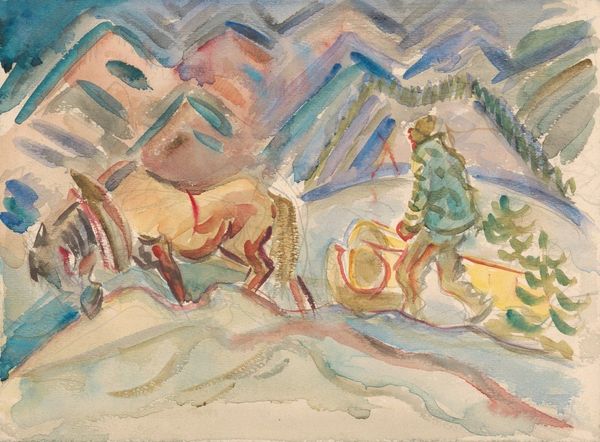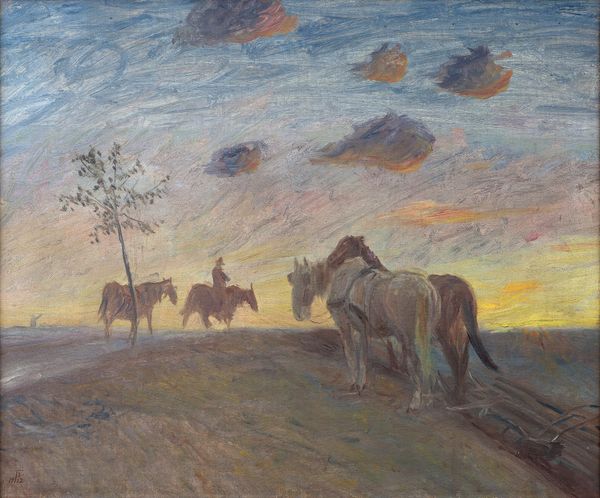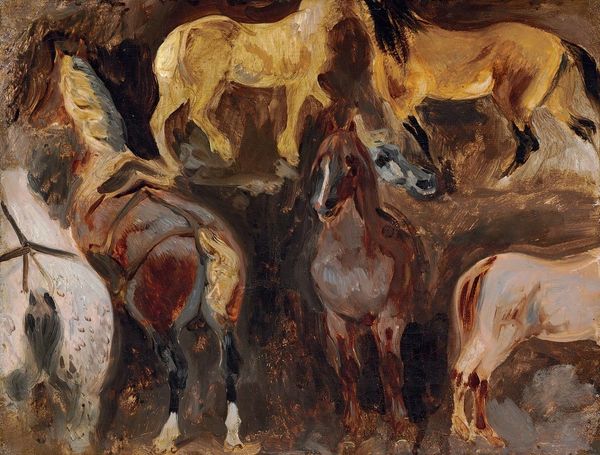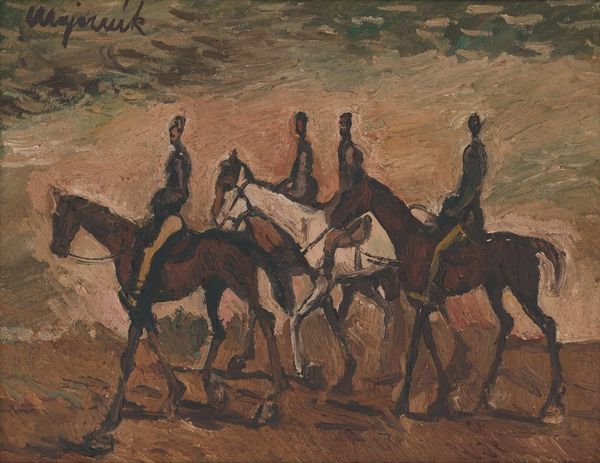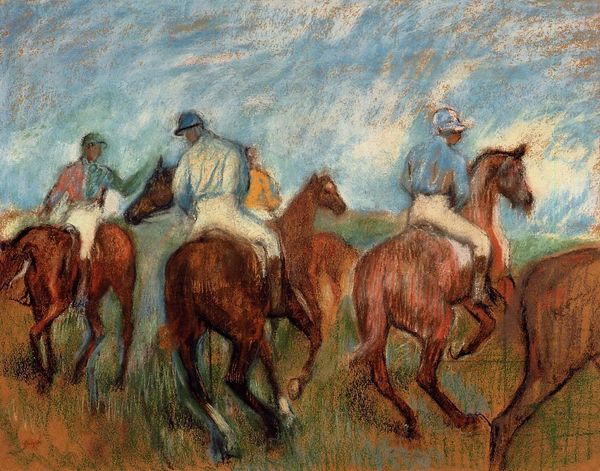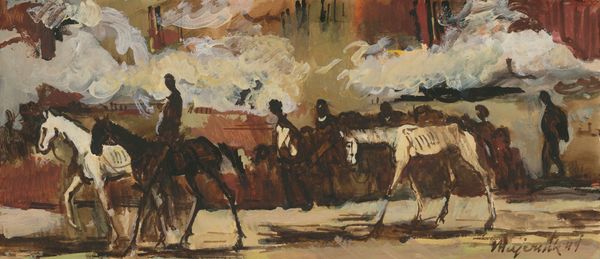
Copyright: Public Domain: Artvee
Edvard Munch painted Horses Ploughing using oil on canvas around 1928. Notice the materiality of the paint itself. You can see how Munch applied these strokes in an almost crude manner. Thick swathes of pigment drag across the canvas, capturing the raw energy of the scene. The painting is not just a representation of labor but an embodiment of it. The scene suggests a deeper commentary on the relationship between humans, animals, and the land. The rough application of the paint, and the simplified forms, give the whole image an immediate, visceral quality. This wasn't merely observed, it was felt by the artist. Munch doesn't present a polished, romanticized view of labor. Instead, we're confronted with the realities of physical work. By emphasizing process, materials, and social context, we gain a deeper understanding of the artwork, challenging traditional distinctions between fine art and craft.
Comments
No comments
Be the first to comment and join the conversation on the ultimate creative platform.
